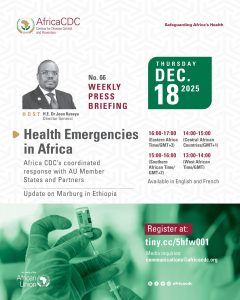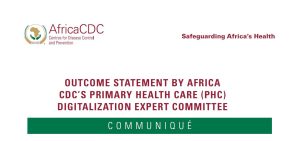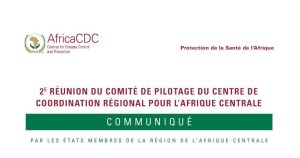A well-functioning supply chain is the backbone of any health system. Yet across Africa, insufficient infrastructure, fragmented logistics, and limited access to real-time data often delay the delivery of essential health products, including vaccines, diagnostics, medicines, nutrition supplies, and emergency kits.
In response, the Africa Centres for Disease Control and Prevention (Africa CDC) and UNICEF have joined forces under an expanded Joint Action Plan (2024–2027) to strengthen health supply chains across the continent.
The partnership aims to boost Africa’s capacity to respond to public health emergencies and ensure more reliable access to life-saving services and health products for all. As part of this effort, the partners plan to establish a new dashboard mapping Africa’s health supply chain.
“Strong supply chains save lives. When health products move efficiently, health systems thrive,” said Africa CDC Director-General, Dr Jean Kaseya, welcoming the collaboration.
At the heart of this partnership is a new flagship initiative —the Continental Supply Chain Snapshot. This strategic tool will provide a comprehensive overview of each country’s supply chain capabilities, highlighting gaps, strengths, and opportunities for improvement across governance, planning, procurement, warehousing, digital infrastructure, and last-mile delivery.
Developed with input from surveys, national reports, interviews, and digital mapping, and backed by Ministries of Health and Finance, along with local partners, the Snapshot will inform strategic decisions. It will also feed into an interactive dashboard that tracks performance trends, highlights innovations, and supports policymakers to act quickly and effectively.
More than a crisis-response tool, the Snapshot and dashboard are designed to support long-term planning and investment, aligned with the Africa CDC Strategic Plan (2024–2027), Agenda 2063, and key Sustainable Development Goals (SDGs), particularly SDG 3 (Good Health and Well-Being), SDG 9 (Industry, Innovation and Infrastructure), and SDG 17 (Partnerships for the Goals).
The plan combines UNICEF’s global expertise in child health and logistics with Africa CDC’s continental leadership in disease prevention and outbreak response. It spans all 55 African Union Member States and covers key areas such as immunisation, nutrition, essential medicines, and emergency supply chains across preparedness, response, and recovery phases.
“This effort gives policymakers and operators a clear, evidence-based view of what works and where to invest. By turning fragmented information into actionable insights, we will accelerate outbreak response today while building a more resilient, self-reliant supply chain for tomorrow,” said Tesfaye Haile Michael, Head of Supply Chain at Africa CDC.
The need for agile, data-driven supply chains is more urgent than ever, particularly as Africa faces rising threats from mpox, cholera, malaria, and other public health emergencies.
For Africa CDC, the Continental Supply Chain Snapshot builds on its Supply Chain Framework and Strategy, developed to enhance preparedness, efficiency, and self-reliance. The framework focuses on workforce development, system integration, and resilience through training, digital tools, and centres of excellence. It also fosters regulatory alignment, regional cooperation, and public–private partnerships, while promoting stockpiling, local production, pooled procurement, and diversified sourcing.
The ongoing mpox outbreak has exposed serious gaps in Africa’s health systems, including limited disease surveillance, testing delays, and underfunded laboratories. These weaknesses disrupt logistics and supply chains, slowing the delivery of life-saving medical supplies when they are needed most.







